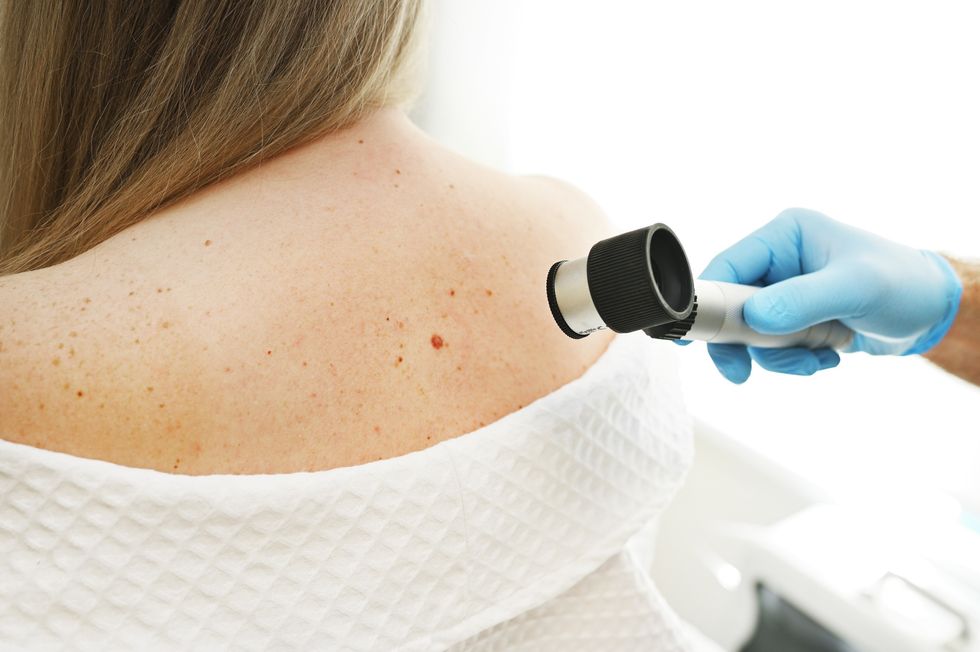Highlights:
- Talent manager Brandon Blackstock, Kelly Clarkson’s ex-husband, has died aged 48
- He had been privately battling melanoma, the most dangerous form of skin cancer
- Melanoma is aggressive and can spread quickly if not detected early
- Risk factors include fair skin, excessive sun exposure, and family history
- Early detection through skin checks and sun protection is key to survival
Brandon Blackstock, a well-known talent manager and the former husband of singer Kelly Clarkson, has passed away at the age of 48 following a three-year battle with melanoma.
In a statement released on 7 August 2025, Blackstock’s management company, Starstruck, confirmed the news:
“Brandon bravely battled cancer for more than three years. He passed away peacefully and was surrounded by family.”
His death has drawn attention to melanoma, commonly referred to as the “black tumour”, which is the deadliest form of skin cancer. Though it accounts for a smaller percentage of skin cancer cases, it is responsible for the vast majority of skin cancer-related deaths.
What Makes Melanoma So Dangerous?
Unlike basal cell or squamous cell carcinoma — which typically grow slowly and remain localised — melanoma spreads aggressively if not caught early.
“Melanoma is considered the most dangerous type of skin cancer because it has a high potential to spread (metastasise) to other parts of the body,” explained Dr Adarsh Vijay Mudgil, a dermatologist.
“It travels quickly through the bloodstream and lymphatic system.”
Dr Viktoryia Kazlouskaya, dermatologist and CEO of the Dermatology Circle, added that risk factors influencing the spread include tumour size and stage, the patient’s age, and immune status.
A high-profile example is Teddi Mellencamp, alum of The Real Housewives of Beverly Hills, who was diagnosed in 2022. By early 2025, doctors found melanoma-related tumours in her brain and lungs — believed to have been developing undetected for months.
What Does Melanoma Look Like?
Melanoma often appears as a new or changing mole, with an irregular shape, uneven borders, or colour variation — typically brown, black, red, pink or even white.
“Look for the ‘ABCDE’ signs,” said Dr Mudgil:
- Asymmetry
- Border irregularity
- Colour variation
- Diameter larger than 6mm
- Evolution of an existing mole
While regular self-exams help, professional evaluations are essential, Dr Kazlouskaya noted:
“Many common moles can appear slightly irregular but are harmless, while some melanomas might look quite ordinary.”
Who Is at Risk of Melanoma?

Melanoma can affect people of all skin tones, but those with lighter skin face a significantly higher risk.
- White individuals: 1 in 33 lifetime risk
- Black individuals: 1 in 1,000
(Source: American Cancer Society)
People with red or blond hair, freckles, light eyes, or skin that burns easily are especially at risk.
Other risk factors include:
- Older age
- Male gender
- Personal or family history of melanoma
- A high number of moles
- History of blistering sunburns, especially in childhood
- Prolonged sun exposure, especially outdoors
How to Protect Yourself from Melanoma
The vast majority of skin cancers — including melanoma — are caused by ultraviolet (UV) radiation.
To reduce your risk:
- Apply broad-spectrum sunscreen with SPF 30+ every day, regardless of weather
- Avoid peak sun exposure between 10am and 4pm
- Wear protective clothing, wide-brimmed hats, and sunglasses
- Avoid indoor tanning beds, which can raise melanoma risk by up to 75% when used before age 35
“Prevention is simple but vital,” said Dr Kazlouskaya. “Daily sunscreen and annual skin checks can make a significant difference.”
What Are the Survival Odds?
Melanoma is often treatable when caught early. According to the American Cancer Society:
- Early-stage melanoma (confined to skin): 99% five-year survival rate
- Advanced melanoma (spread to distant organs): 35% five-year survival rate
Dr Kazlouskaya stressed the importance of urgency:
“The earlier we catch it, the better. In early stages, it can often be removed surgically with excellent outcomes.”
In 2025, an estimated 104,960 new cases of melanoma will be diagnosed in the US, with around 8,430 deaths expected.
“If you notice something unusual on your skin, see a board-certified dermatologist as soon as possible,” advised Dr Mudgil.














